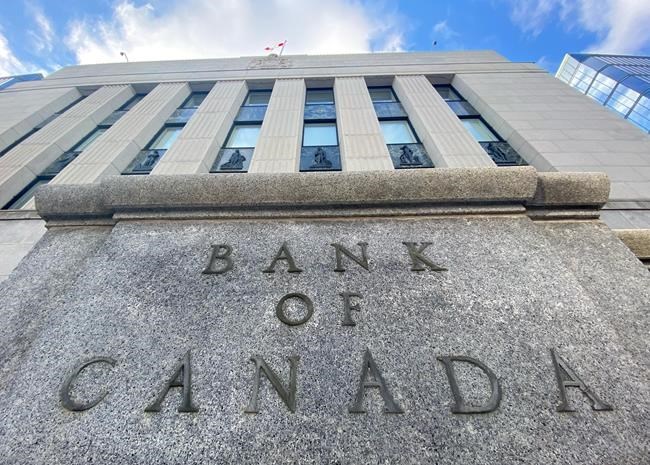TORONTO — A deputy governor of the Bank of Canada says the central bank is monitoring rising housing prices, as it keeps interest rates low to help borrowers cope with the COVID-19 pandemic.
“Making sure we're not creating a bubble is very important here. And so we're keeping an eye on that,” said Paul Beaudry in a Thursday in a wide-ranging question-and-answer session for the Greater Moncton Chamber of Commerce, the Fredericton Chamber of Commerce, and the Saint John Region Chamber of Commerce.
Beaudry said that as the central bank has lowered borrowing costs, it has made it so homebuyers can better carry the monthly burden of mortgages. But for young people, there is still the challenge of saving a down payment.
“We're trying to figure out: Are they buying based on unsustainable expectations of how house prices are going to move?,” he said. “Up to now, that's not seeming to be why they're buying houses. It really is this combination of pent-up demand and the lower rates.”
The session and a separate press conference followed a speech where Beaudry explained the Bank of Canada’s recent decision to continue to buy $4 billion bonds per week, and keep its key interest rate at at 0.25 per cent.
In his speech, Beaudry said that “going forward, both downside risks, due to the rising cases of COVID-19, and upside risks to inflation, due to the vaccine, are in play.”
Beaudry told reporters that the central bank is not yet sure whether the upside and downside risks are equally balanced, saying the bank will share more in January but for now is standing pat.
“We are keeping our options on both sides, and in that sense, it is more or less balanced,” he said, adding that the central bankers are still working through some newly released information and don’t yet have an answer to which way the economy will lean. The answer echoed the Bank of Canada’s Wednesday statement that economic activity is “highly uneven” across sectors and that the economy will be on “a choppy trajectory until a vaccine is widely available.”
Earlier in the day, his speech noted that negative interest rates remain in the central bank's toolkit, but said they would not make sense except in a “dramatically different set of circumstances.”
Beaudry said the bank wants everyone back to work on a sustainable basis and the economy back to “full, full capacity” before it will raise rates.
“One of the things we're the most worried about is this aspect of the second wave: creating more scarring,” he said, adding that business closures make the economy's recuperation slower.
Although there haven’t been too many bankruptcies through the pandemic so far, he said there are “a whole set of businesses are on the edge of falling over” during the second wave of the pandemic.
“A whole set of small businesses might have made their way until now. ...Things aren't great, you're trying to work out. And now the second wave arrives, at some point, you just say, ‘I'm throwing in the towel.’”
When asked how Canada’s approach compares to the U.S., he said the neighbouring nations are comparable — at first pass.
“We're doing, I believe, a bit better job (at protecting people),” he said. “With respect to COVID, we've had better measures, and we have less of the COVID cases expanding. ...We've also had very strong support to actually help and target you know, income to those that needed it.”
In his speech earlier in the day, Beaudry sought to reassure anyone who was concerned about the bank’s bond-buying program, quantitative easing.
“To put it simply: we are not providing a free lunch for the government through QE. The government will have to repay the bonds that we purchase,” he said of the program, which is a first for Canada.
TD Economics Senior Economist Sri Thanabalasingam wrote that the speech was “down-to-earth,” but made clear that the bank could recalibrate its approach in the near future.
“There has been much chatter recently on whether BoC has been going overboard in terms of asset purchases, but what is sometimes missed is that the Bank's balance sheet is still low compared to other major central banks,” Thanabalasingam said.
Looking ahead, wrote Thanabalasingam in a note to clients, “much will depend on the rollout of the (COVID-19) vaccine.”
“The Bank has left the door wide open, but you can bet it will be watching vaccine developments in Canada and all around the world closely leading up to its January economic update.”
This report by The Canadian Press was first published Dec. 10, 2020.
Anita Balakrishnan, The Canadian Press



